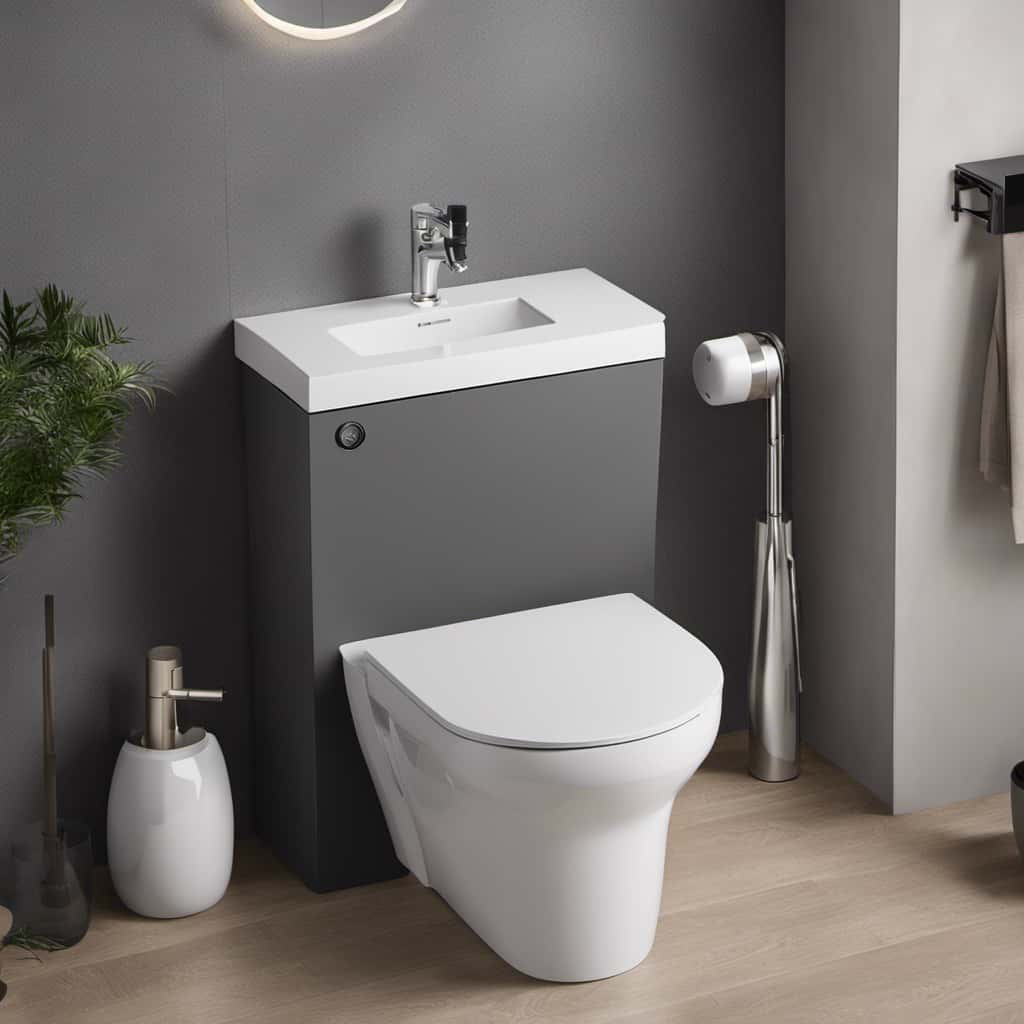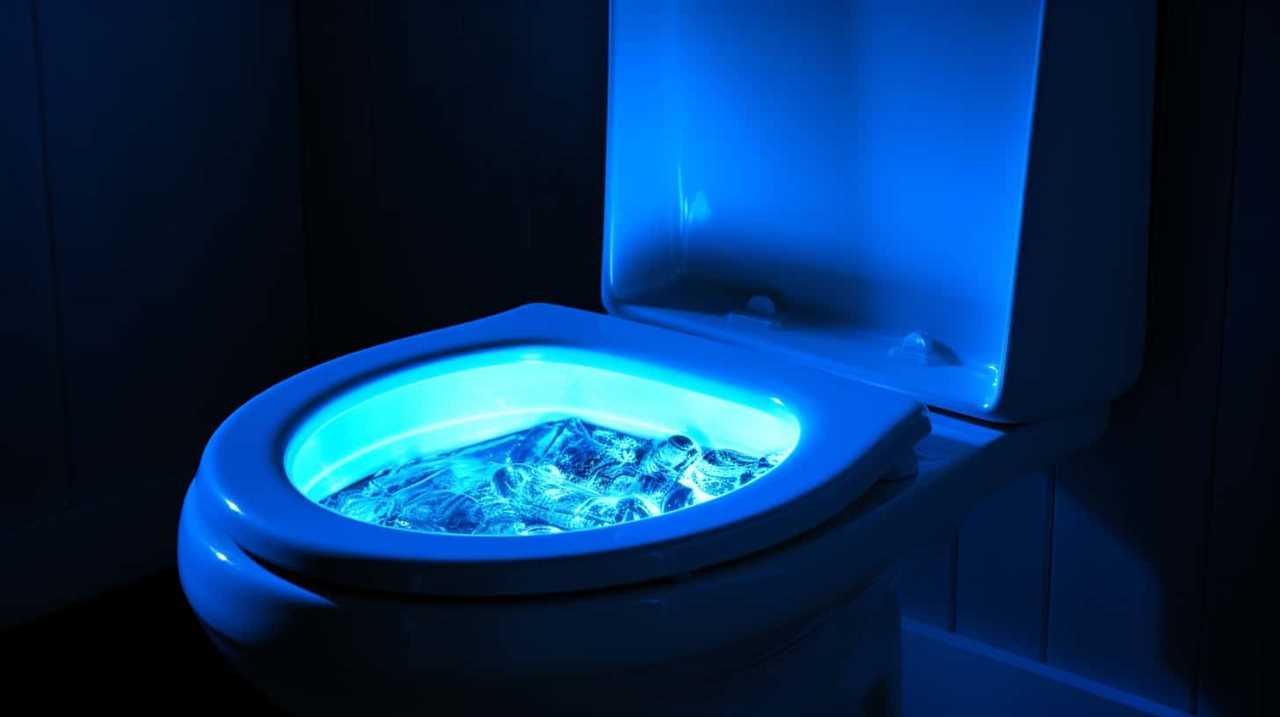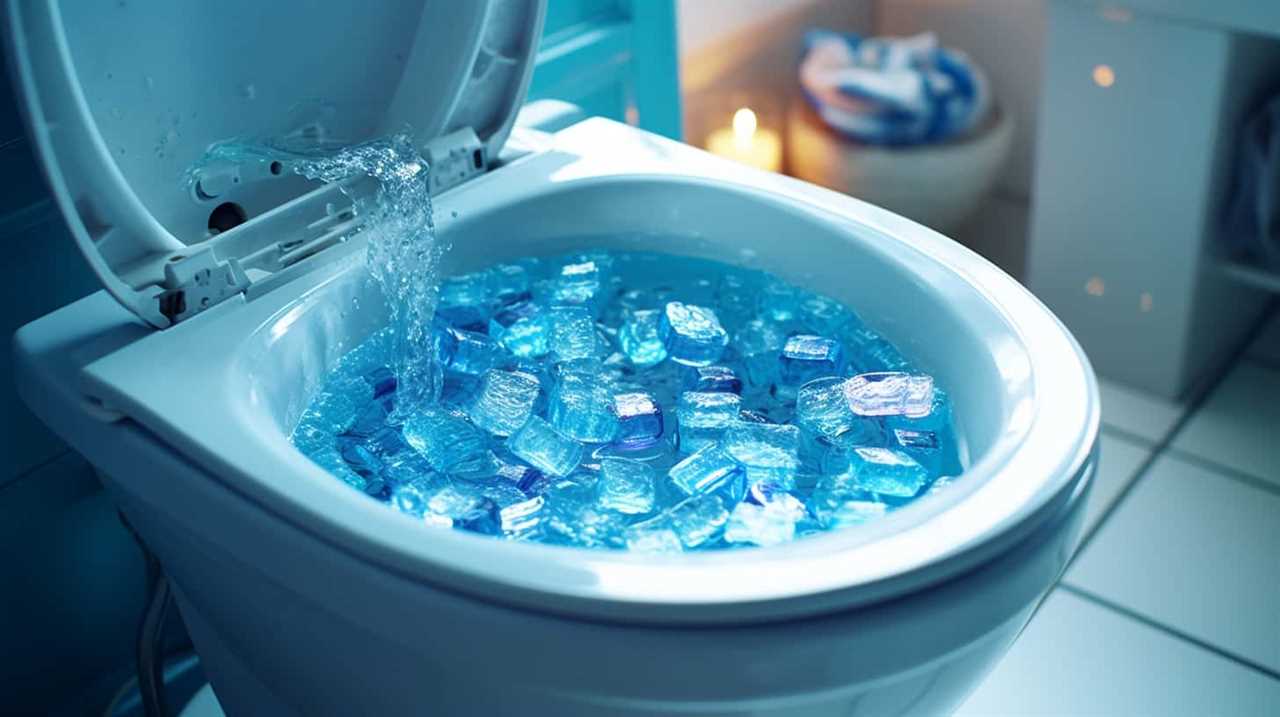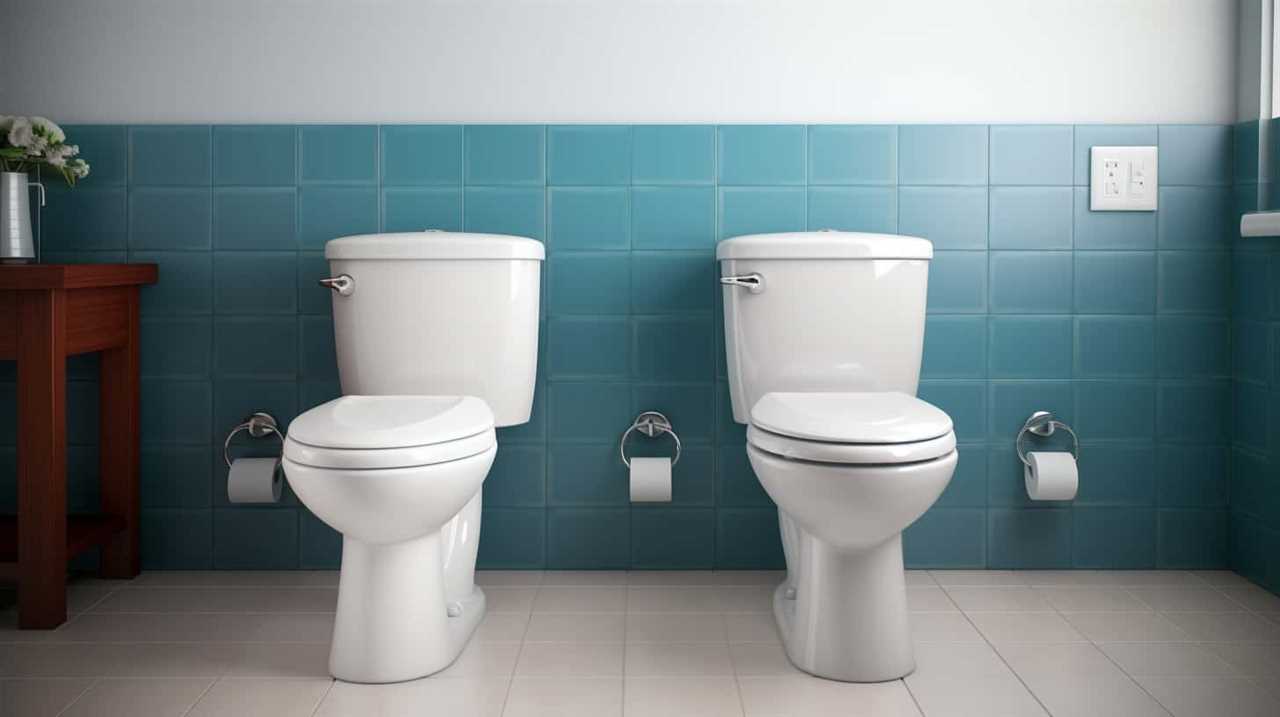Were you aware that more than 80% of septic tank failures are the result of household items being flushed down the toilet that shouldn’t be?
One common culprit is the tampon. In this article, we’ll explore the dangers of flushing a tampon with a septic tank and the potential consequences for your system.
We’ll also provide tips on preventing these mishaps and signs to look out for in case of tampon-related septic tank issues.
Stay informed and protect your septic system from harm.

Key Takeaways
- Flushing tampons with a septic tank can lead to severe environmental consequences and damage to the septic system.
- Tampons are non-biodegradable and can cause blockages in the septic tank system.
- Proper tampon disposal is crucial to prevent harmful effects on the environment and septic tanks.
- Flushed tampons can lead to backups, clogs, and system failures in the septic tank.
Tampons and Septic Tanks: A Dangerous Combination
When it comes to tampons and septic tanks, we need to be aware of the dangerous combination they can create. Improper disposal of tampons can lead to severe environmental consequences and damage to septic systems. It’s crucial to understand the importance of proper tampon disposal to prevent harmful effects on the environment and the functionality of septic tanks.
Tampons are designed to absorb and retain fluids, and when flushed down the toilet, they can cause blockages in septic tank systems. The non-biodegradable materials of tampons can accumulate and clog the pipes, leading to costly repairs. Furthermore, the chemicals used in tampons can disrupt the natural balance of the septic tank, affecting its ability to break down waste efficiently.
To avoid these problems, it’s essential to dispose of tampons properly. Use designated disposal bins or wrap them in toilet paper before disposing of them in the trash. This simple step will prevent environmental harm and maintain the functionality of septic systems.
The Journey of a Flushed Tampon
After being flushed down the toilet, a flushed tampon embarks on a perilous journey through the septic tank system. Once it enters the septic tank, the tampon joins a mixture of wastewater and solid waste. The tampon, being non-biodegradable, doesn’t break down easily like toilet paper or other organic matter.

Instead, it remains intact and can cause blockages within the septic tank system. These blockages can lead to backups, clogs, and even system failures. Furthermore, the presence of flushed tampons in the septic tank system can have significant environmental implications.
As they don’t break down, tampons can accumulate in the tank and eventually find their way into surrounding ecosystems, polluting water sources and harming wildlife. Proper tampon disposal, such as wrapping them in toilet paper and placing them in the trash, is crucial to prevent these environmental issues.
The Impact on Your Septic System
Once inside the septic tank, the presence of flushed tampons can have detrimental effects on our septic system. Tampons are not designed to break down easily, and their accumulation can lead to clogging and blockages in the septic tank. This can disrupt the natural flow and treatment process of the system, resulting in backups, foul odors, and even septic tank failure.
To better understand the impact of flushed tampons on septic systems, let’s take a look at the following table:

| Effects of Flushed Tampons on Septic System | |
|---|---|
| 1. Clogging and Blockages | Tampons can accumulate and form obstructions in the septic tank, hindering the flow of wastewater through the system. This can lead to backups and potential damage to the tank. |
| 2. Septic Tank Maintenance | Flushed tampons require more frequent septic tank maintenance, such as pumping and cleaning, to remove the accumulated debris and prevent further issues. |
| 3. Increased Risk of Repairs | The presence of tampons in the septic tank increases the likelihood of damage to the tank and drainage field, resulting in costly repairs and replacements. |
| 4. Environmental Impact | When tampons bypass the septic system and enter the environment, they can contribute to water pollution and harm aquatic ecosystems. |
To avoid these problems and ensure the proper functioning of our septic systems, it is crucial to dispose of tampons in the trash instead of flushing them. Regular septic tank maintenance and periodic inspections by professionals can also help identify and address any issues before they escalate into costly repairs.
Signs of Tampon-Related Septic Tank Issues
To identify tampon-related septic tank issues, we need to be aware of the signs indicating potential problems. Common septic tank problems can arise when tampons are flushed, leading to clogs and blockages in the system.
One sign to watch out for is slow drainage. If you notice that water takes longer than usual to drain from sinks, toilets, or showers, it could be a sign of tampon-related issues in your septic tank.
Another sign is a foul odor. If you detect a strong, unpleasant smell coming from your drains or your septic tank area, it may indicate a problem caused by flushed tampons.

To prevent tampon-related septic tank issues, follow septic tank maintenance tips such as avoiding flushing tampons and ensuring regular pumping and inspection of your septic system.
Tips for Preventing Tampon Mishaps
One key tip to prevent tampon mishaps with a septic tank is to always use a designated disposal method. Here are four important tips for preventing leaks and ensuring proper disposal methods:
- Choose tampons with appropriate absorbency: Using tampons that are too absorbent can increase the risk of leaks and blockages in your septic system. Opt for tampons that match your flow.
- Follow manufacturer’s instructions: Each tampon brand may have specific instructions for disposal. It’s crucial to read and follow these instructions carefully to prevent any mishaps.
- Use a trash bin or special disposal bag: Instead of flushing tampons down the toilet, dispose of them in a designated trash bin or use special disposal bags designed for feminine hygiene products. This ensures proper containment and prevents potential septic tank issues.
- Regular septic tank maintenance: Schedule regular septic tank maintenance to check for any blockages or issues caused by tampon disposal. A professional can assess the system’s health and make any necessary repairs or adjustments.
Frequently Asked Questions
Are All Tampons Safe to Flush in a Septic Tank?
Not all tampons are safe to flush in a septic tank. It’s important to consider tampon disposal alternatives to avoid clogging and damaging the system. Flushing tampons can have negative environmental impacts as well.
How Long Does It Take for a Tampon to Decompose in a Septic Tank?
In a septic tank, a tampon can take several months to decompose fully. This process can have a negative environmental impact, as it can clog the system and lead to costly repairs.

Can Flushing Tampons in a Septic Tank Cause Other Plumbing Issues?
Flushing tampons in a septic tank can have potential consequences and cause damage to the septic system. It is important to properly dispose of tampons to avoid clogging pipes and compromising the functionality of the septic system.
Is It Possible for a Tampon to Clog the Septic Tank Completely?
It is possible for a tampon to clog the septic tank completely, leading to potential plumbing issues. Improper tampon disposal can have a detrimental environmental impact, so it is important to dispose of them properly.
What Should I Do if I Accidentally Flush a Tampon in a Septic Tank?
If you accidentally flush a tampon in a septic tank, potential consequences include clogs, backups, and damage to the system. To avoid these issues, always dispose of tampons in the trash, not the toilet.
Conclusion
In conclusion, flushing a tampon down a septic tank can have detrimental effects on your septic system. The tampon’s journey through the pipes can lead to clogs and blockages, potentially causing expensive repairs.

It’s crucial to be aware of the signs of tampon-related septic tank issues, such as slow drains and unpleasant odors. By taking preventative measures and properly disposing of tampons in the trash, you can avoid these problems and keep your septic system running smoothly.










